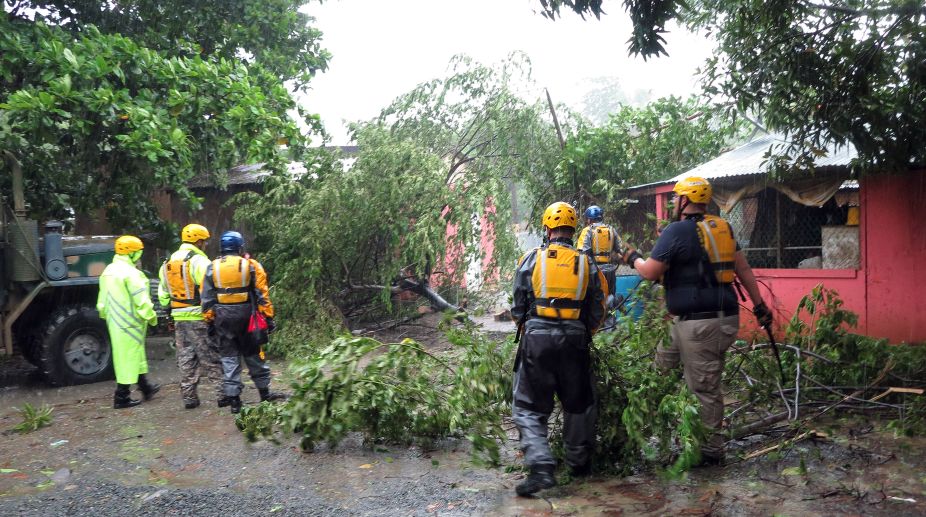The “potentially catastrophic” hurricane Irma, the strongest Atlantic Ocean hurricane in recorded history, after causing widespread damage in the northern Caribbean islands was now moving towards Puerto Rico, according to weather authorities.
Irma’s eye is located about 80 km (50 miles) north of San Juan, Puerto Rico, the US National Hurricane Centre (NHC) reported late Wednesday.
It continues to move at around 26 km/h towards the west-northwest with maximum sustained winds of 295 km/h and even higher gusts, reports Efe news.
The NHC forecast that Irma’s eye will continue to pass just north of Puerto Rico on Wednesday night, will pass near or just north of the Hispaniola Island’s coast on Thursday, and will be near the Turks and Caicos and southeast Bahamas by Thursday evening.
Then it is expected to head towards northern Cuba and will arrive in Florida later in the week.
Irma, which, according to the NHC, is the most powerful Atlantic Ocean hurricane ever, made landfall early Wednesday morning in the Caribbean and hit Antigua and Barbuda.
“Barbuda right now is literally a rubble,” CNN quoted Prime Minister Gaston Browne of Antigua and Barbuda as saying.
“The entire housing stock was damaged,” Browne said after visiting the island of 1,800. “It is just a total devastation.”
Communication was disrupted after winds snapped a cell tower in two on the island.
Charles Fernandez, minister of foreign affairs and international trade for Antigua and Barbuda, said that destruction on Barbuda was “upwards of 90 per cent”.
On the island of San Martin, the Princess Juliana International Airport, the third largest airport in the Caribbean, suffered serious infrastructure and runway damages.
So far, one person has been killed in Barbuda and two San Martin and San Bartolome.
Although some fluctuations in intensity are expected, the NHC forecasts that Irma will remain a powerful category 4 or 5 hurricane and will produce rain accumulations of 20 to 30 cm, with isolated maximums of 45 cm, through Saturday.
Irma’s “large and destructive waves” and storm surges could raise sea levels from 2 to 3 metres above normal along the coasts of the islands in the northeastern Caribbean.
The first tropical storm in the Atlantic this year was Arlene, which formed in the mid-Atlantic in April, more than a month before the start of the season.
It was subsequently followed by Bret, Cindy, Don, Emily and Franklin, which became the first hurricane of the season; then Gert, the second hurricane; Harvey, which reached category 4; Irma, category 5, the maximum, and Jose and Katia, both in category 1 have just started.












